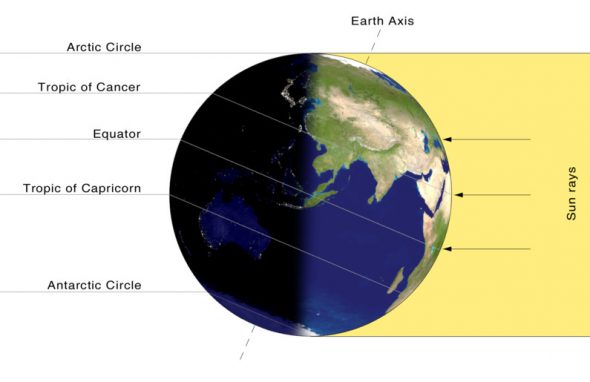
Astronomical summer arrived in Thornton this morning and with the solstice we will enjoy our longest day of the year.
Summer officially began at 4:07am MDT this morning. The Summer Solstice occurs when the North Pole is tilted at it closest to the sun – 23.4 degrees. This results in the longest day of the year in the Northern Hemisphere.
Here in Denver the sun rises at 5:32am today and sets at 8:31pm. This will give us 14 hours, 59 minutes and 14 seconds of daytime.
Tomorrow it will be a bit less than one second shorter than today and each day from now through the Winter Solstice in December will get gradually shorter as well.
At the poles of the globe, the seasonal extremes will be quite notable. Areas north of the Arctic Circle to the North Pole will see 24 hours of daylight and have a midnight sun. On the opposite end of the globe, the South Pole will have no direct sunlight at all as they are in the depths of their winter.
Did you know that there is a difference between the astronomical seasons that we are discussing here and meteorological seasons?
Meteorological seasons differ slightly and are geared toward matching the calendar with the annual temperature cycle. This is done primarily for meteorological observing and forecasting and in many ways it is more logical than the astronomical seasons.
For the Northern Hemisphere, the meteorological spring covers the months of March, April and May. Summer brings the hottest months of the year and so meteorological summer is June, July and August. Meteorological fall then is September, October and November followed by the coldest months of December, January and February as meteorological winter.
